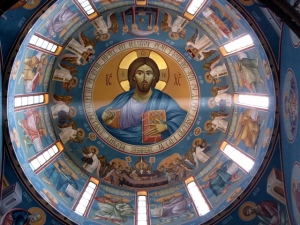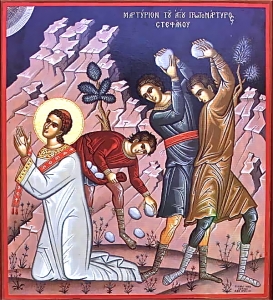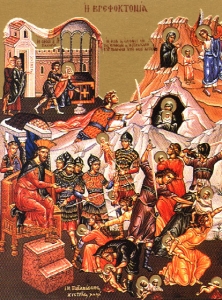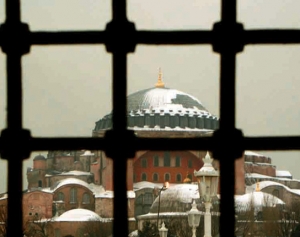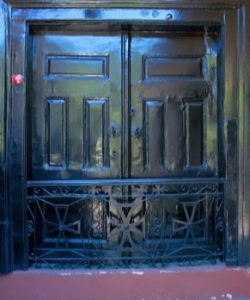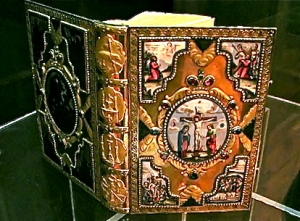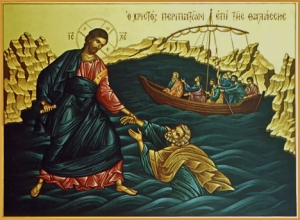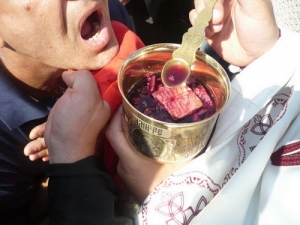Category: Uncategorized
Ecumenical Patriarch Talks Candidly
It seems to me that this is even more fitting now! Please click on the link below and watch His All Holiness Bartholomew I interviewed by CBS News.
http://www.cbsnews.com/sections/60minutes/main3415.shtml
ISTANBUL – There are two front gates into the walled compound that protects the home of Ecumenical Patriarch Bartholomew I, the spiritual leader of the world’s 300 million Eastern Orthodox Christians. Visitors enter through a door secured by a guardhouse, locks and a metal-screening device. They cannot enter the Phanar’s main gate because it was welded shut in 1821 after the Ottoman Turks hanged Patriarch Gregory V from its lintel. The black doors have remained sealed ever since. A decade ago, bombers who tried to open this gate left a note: “We will fight until the Chief Devil and all the occupiers are chased off; until this place, which for years has contrived Byzantine intrigues against the Muslim people of the East is exterminated. … Patriarch you will perish!” The capital of Byzantium fell to the Turks in 1453. Yet 400,000 Orthodox Christians remained in greater Istanbul early in the 20th century. That number fell to 150,000 in 1960. Today fewer than 2,000 remain, the most symbolic minority in a land that is 99 percent Turkish. They worship in 86 churches served by 32 priests and deacons, most 60 or older. What the Orthodox urgently need is an active seminary and patriarchate officials are convinced the European Union will help them get one, as Turkey races to begin the formal application process
Pray for the Patriarchate !!!
Christ is Born!
Glorify Him!
]]>
Note
The Bible and The Church Part 2
Please Click on Link to Play
(To advance please place cursor on image and click )
I hope you enjoy, thank you, your comments are aways read and appreciated.
God Bless! dn.g.
]]>Note to Readers!
The Bible and the Church – Lesson 1
the-bible-and-the-church Attached is a beginning of a series on the Bible and the Church. You must use Quick Time movie viewer. This is a FREE download go to http://www.apple.com/quicktime/download/. Follow the instructions. To advance the images on the movie just please your curser on the image and click. To advance each slide please place cursor on slide and click. Thank You! I hope you enjoy this first class and more will follow! Please send me your comments. gpb]]>
“With Fear of God with Faith and Love… ”
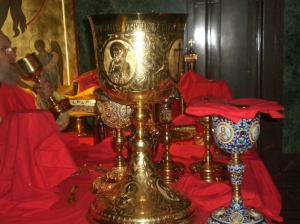
During the Divine Liturgy we are called to partake of Christ with the “Fear of God, Faith and Love… ” The fear of God is not the type of fear that means we are petrified and so terrified of God that we quake and live in horror; instead this “fear” is awe, reverence and veneration. We know the holiness of God as Trinity and our separation from Him caused by our own sinfulness. This awe requires us to look at ourselves honestly and to understand the great gulf between us and Our Lord. But, there is more to the invitation to the Chalice than fear. There are two more phrases that we need to consider.
With faith! How can we approach God without faith? We understand the great gulf between us, but faith can overcome this separation. Faith in the Incarnation of Jesus Christ, Our Lord becoming one of us; truly God and truly Man. His love for His Creation is so great that He put on our humanity through the Theotokos by the Holy Spirit to allow us to relate to Him. He assumed our nature to decrease the separation between us. This mystery is beyond our understanding. The result of His love for us is to lessen the “fear” we have for Him. How can we fear one of our own? Can we live in dread of someone who is there waiting for us to reach out so that His strength supports us in our weakness? With faith, we are certain that he is the gentle shepherd who will search us out when we’re lost and carry us on His shoulders when we’re too tired to walk to Him. This faith is a faith in God’s love for us. This faith is an assurance of Christ’s continued presence among us, His People.
When we realise Christ is there in the Chalice waiting for us, there is only one response – Love. Love for God, a burning desire for Him to be the centre of our life. By the invitation of the Church, we are called to partake and become one with Him. Not only are we summoned to join with Christ, but also to become one with all who share in this Cup. This is true love, to become part of each other. Christ became one of us and shared our nature because of His love. By sharing Him, we share each other. It is a miracle of His love that we enter into an intimate relationship with each other as a community. As we partake of Holy Communion “with the fear of God, Faith and Love,” not only do we draw near to Christ; but equally to each other. The closeness of this bond is the unity that makes us the Body of Christ with one head – Our Lord God and Saviour, Jesus Christ. Answer the invitation! Let us meet Christ and each other at His Cup of Love. ]]>The Bridal Chamber of the King

